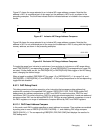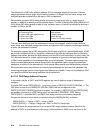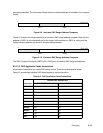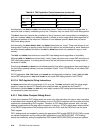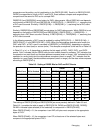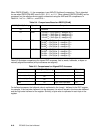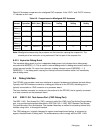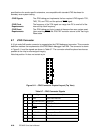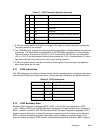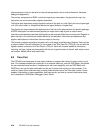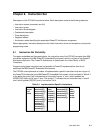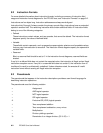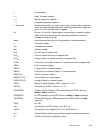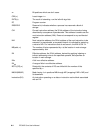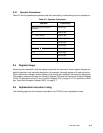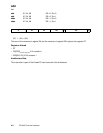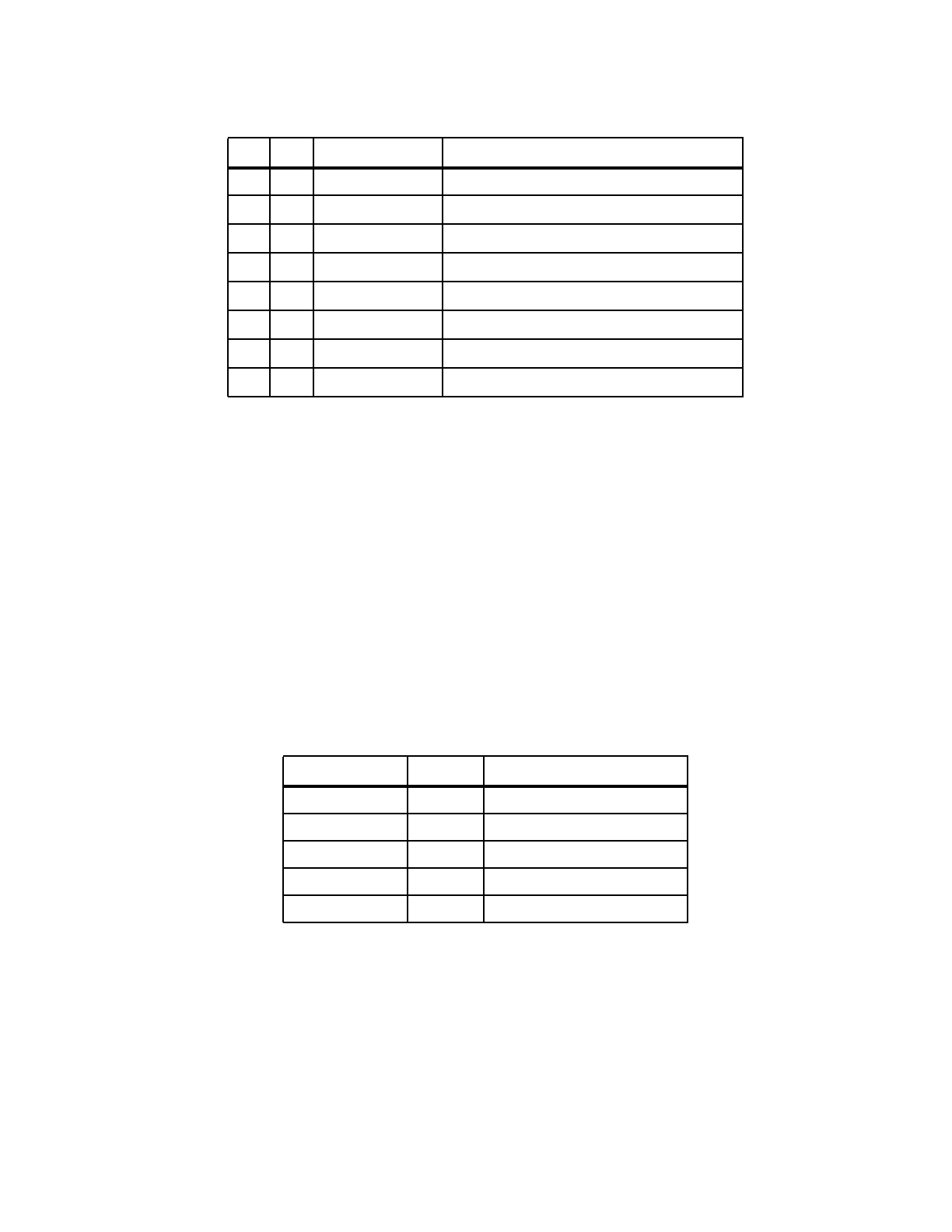
Debugging 8-21
1. A 10K ohm pullup resistor should be connected to this signal to reduce chip power consumption.
The pullup resistor is not required.
2. The +POWER signal, sourced from the target development board, indicates whether the processor
is operating. This signal does not supply power to the RISCWatch hardware or to the processor.
The active level on this signal can be +5V or +3.3V (note that the PPC405 core can have either
+5V or +3.3V I/O, but the processor itself must be powered by +3.3V). A series resistor (1K ohm or
less) should be used to provide short circuit current-limiting protection.
3. A 10K ohm pullup resistor must be connected to these signals to ensure proper chip operation
when these inputs are not used.
8.7.1 JTAG Instructions
The JTAG debug port provides the standard
extest
,
idcode
,
sample/preload
, and
bypass
instructions
and the optional
highz
and
clamp
instructions. Invalid instructions behave as the
bypass
instruction.
8.7.2 JTAG Boundary Scan
Boundary Scan Description Language (BSDL), IEEE 1149.1b-1994, is a supplement to IEEE
1149.1-1990 and IEEE 1149.1a-1993
Standard Test Access Port and Boundary-Scan Architecture
.
BSDL, a subset of the IEEE 1076-1993 Standard VHSIC Hardware Description Language (VHDL),
allows a rigorous description of testability features in components which comply with the standard.
BSDL is used by automated test pattern generation tools for package interconnect tests and by
electronic design automation (EDA) tools for synthesized test logic and verification. BSDL supports
9 I TMS
1
JTAG Test Mode Select
10
NC Reserved
11
I HALT
3
Processor Halt
12
NC Reserved
13
NC Reserved
14
Key The pin at this position should be removed.
15
NC Reserved
16
GND Ground
Table 8-8. JTAG Instructions
Instruction Code Comments
Extest 000 IEEE 1149.1 standard.
Intest 1111001 IEEE 1149.1 standard.
Sample/Preload 1111010 IEEE 1149.1 standard.
Private xxxx100 Private instructions
Bypass 1111111 IEEE 1149.1 standard.
Table 8-7. JTAG Connector Signals (continued)
Pin I/O Signal Description



